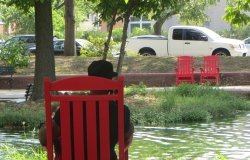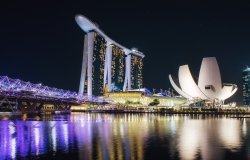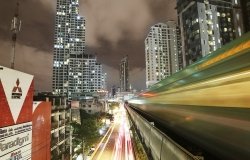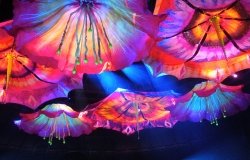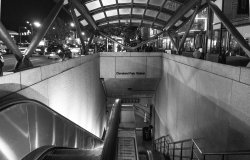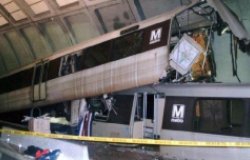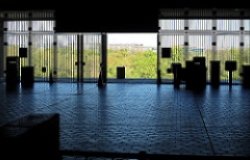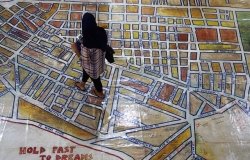Washington, D.C.: The Anxious City
Sometimes thought of as a “sleepy Southern town,” Washington in reality has become a vibrant, vital, and changing urban center that has been traumatized since World War II as long-standing social and racial conventions have collapsed, hundreds of thousands of newcomers have inundated its region, and tens of thousands of locals have moved from one neighborhood to another.
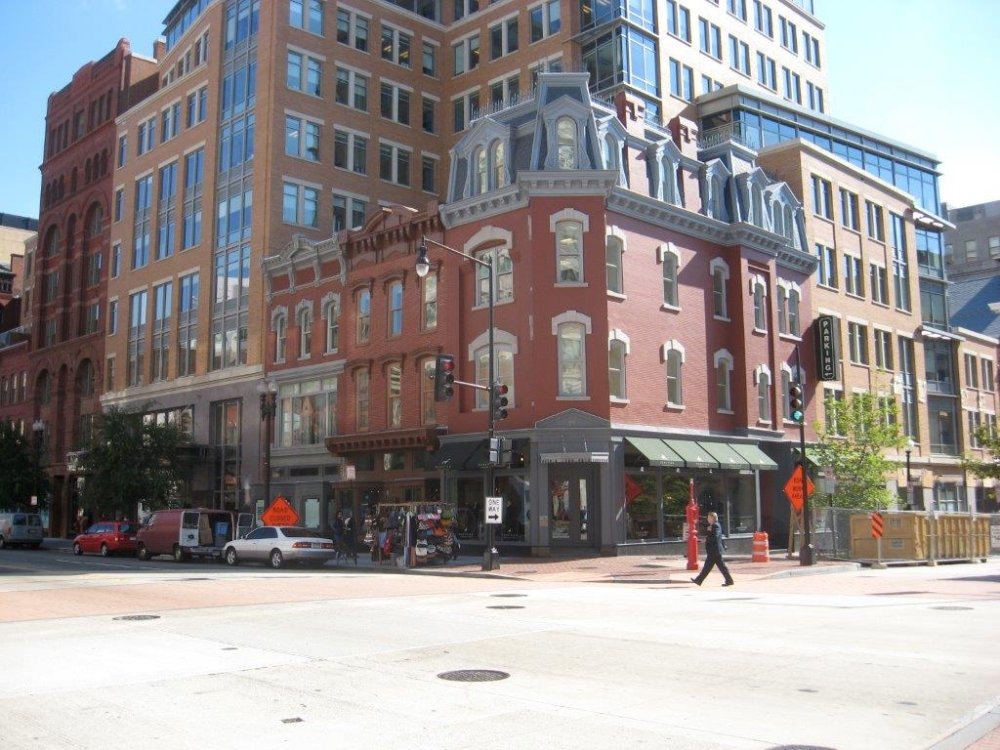
Ever since the year began, I have been speaking to groups across Washington, D.C. about how our city is changing. My 2016 tour has taken me to all four city quadrants, addressing groups as diverse as freshman at impoverished Ward8’s Anacostia High School and retired professionals brought together in wealthy Ward 3 by the Chevy Chase D.C. Historical Society. I have discovered a profound overarching commonality among all who have turned up to listen to me despite deep differences. Everyone complains that they are losing “their” Washington; and, everyone is, to some extent, correct.
Sometimes thought of as a “sleepy Southern town,” Washington in reality has become a vibrant, vital, and changing urban center that has been traumatized since World War II as long-standing social and racial conventions have collapsed, hundreds of thousands of newcomers have inundated its region, and tens of thousands of locals have moved from one neighborhood to another. These shifts shatter everyone’s understanding of how the city is put together and how it works. As a result, Washingtonians of all races, socio-economic standing, gender and generations find themselves looking around and seeing a city that is something different from what they thought it to be.
In speaking with residents, disorienting change is taking place along five dimensions that undermine notions of neighborhood and community: demography, economics, generational divide, the built environment, and identity. The result is a city that becomes ever more anxious about its own future.
Demographic Change: Washington’s population is growing with newly arriving primarily white young professionals replacing older blue collar African Americans. Traditionally white neighborhoods in north and west parts of the city simultaneously are becoming home to larger numbers of visible minorities – though more often Hispanic and Asian rather than African American. Everyone’s mental map of where one is “supposed” to be is discernibly out of date as a consequence of dramatic changes in who lives where.
Economic Change: The transformation of the metropolitan Washington economy from a government company town to a post-industrial powerhouse is evident in the evolution of the city and regional employment structure. While the number of jobs in D.C. has risen, employment in the federal sector has declined. This shift in traditional employment patterns becomes more pronounced once suburban jobs -- which presently stand at over 3,000,000 – are brought into view. Even when supported by government contracts, newer private sector jobs fail to provide the stability of earlier civil service employment.
Economic adjustments are visible along a broad income range so that inequality continues to mark the city, becoming apparent in ever new ways. Simultaneously, long-standing racial divisions continue to plague D.C. As Georgetown University historian Maurice Jackson recently recorded, the median income for D.C. whites is $101,000; and for D.C. Blacks $39,000.
Generational Divide: D.C. has become a favored destination for “Millennials” who make up the preponderance of the city’s newcomers. Wedded to social media, young whites and African Americans think of the city, and how to use it, in ways that are more similar to one another than to the patterns of their grandparents. New points of conflict emerge over zoning for coffee bars, spontaneous crowd-sourced gatherings, and noise levels in which once antagonistic middle-aged white and black Washingtonians find themselves united on the same side of the generational cultural divide.
The Built Environment: New cultural preferences, new wealth, new employment patterns, and new leisure patterns exert pressure on a built environment of a different era. Developers replace their sturdy 1970 cement office building facades with snappy glass; new owners of traditional 1920s townhouses add two or three more stories on top of the old; once open parks are reorganized as fenced-in dog walks; basketball courts give way to bike paths. Not only are the people walking city streets now unfamiliar; the streets themselves look increasingly different.
Identity Change: These profound and rapid demographic, economic, generational, and physical alterations sweeping across D.C. have led to equally profound conflicts over city, neighborhood, community, and individual identity. H Street, Columbia Heights, the Southwest Waterfront, Anacostia, U Street, Mount Pleasant and many, many more D.C. neighborhoods have experienced significant identity dislocation within a broader sweep of “gentrification.” The present era is perceived across the city as one of unbridled development and displacement.
As a long-time Washingtonian, I am struck by how each of these challenges would have seemed welcome in the depths of the 1970s and 1980s, a time when multitudinous obituaries were written for our city. From the perspective of those years, Washington now enjoys all sorts of problems that would have been inconceivable.
As the familiar erodes, residents across D.C. are becoming ever more anxious. Among a school group in Southeast, or a preservation organization in Northwest, a shared lament appears to be taking hold in Washington: Everyone feels disoriented as a new city emerges around them.
Having had the opportunity to speak recently with so many different Washingtonians, I am reminded that no urban reality in immutable. Anxious though they may be, my D.C. neighbors throughout the city remain deeply committed to making their communities work. Living in – let alone governing – cities requires a constant recalibration of how everyone sees the world. That has always been part of the fun.
About the Author

Blair A. Ruble
Former Wilson Center Vice President for Programs (2014-2017); Director of the Comparative Urban Studies Program/Urban Sustainability Laboratory (1992-2017); Director of the Kennan Institute for Advanced Russian Studies (1989-2012) and Director of the Program on Global Sustainability and Resilience (2012-2014)

Urban Sustainability Laboratory
Since 1991, the Urban Sustainability Laboratory has advanced solutions to urban challenges—such as poverty, exclusion, insecurity, and environmental degradation—by promoting evidence-based research to support sustainable, equitable and peaceful cities. Read more

Urban Sustainability Laboratory
Since 1991, the Urban Sustainability Laboratory has advanced solutions to urban challenges—such as poverty, exclusion, insecurity, and environmental degradation—by promoting evidence-based research to support sustainable, equitable and peaceful cities. Read more



